Dolls and toys
This collection includes dolls, toys and games from the late 18th century to the present day. The oldest doll dates from the 1770s and the most recent is a ‘Bratz’ doll.
There are also puzzles and games, musical and moving toys and several doll’s houses. A small selection are on display at Market Hall Museum. Other items in the collection can be viewed by appointment.
Teddy bears

The large bear is made from mohair plush ‘fur’, and dates from c.1910.
The small bear is made from wool/cotton ‘fur’, and dates from the 1990s.
Both bears were made by the German firm ‘Steiff’. In 1880, Margarete Steiff began selling soft toys by mail order. Her teddy bears became popular from 1903, and the firm still makes bears today.
Train set, 1830s
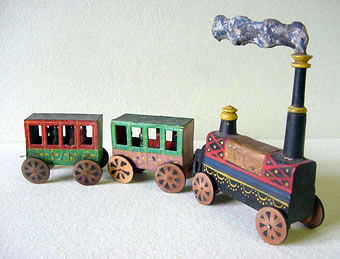
Train set made of painted wood, consisting of engine, coal tender, and carriages with tiny passengers inside. The set also includes wooden track and trees.
It was probably made in Germany, between 1830 and 1840.
Germany was a centre for wooden toy making, producing dolls, animals, farms, train sets and Noah’s Arks.
Doll, 1880s
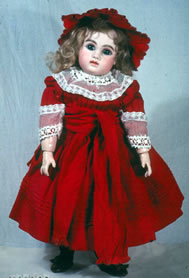
Doll, made in France by Jules Steiner in c.1885.
She has a head made from ‘bisque’ (unglazed porcelain) with blue glass eyes and a hair wig. Her body, arms and legs are made from ‘composition’ – a material made from a mixture of paper, wood pulp and glue.
She is wearing her original clothes of white cotton underwear and red silk dress and hat.
Pedlar doll
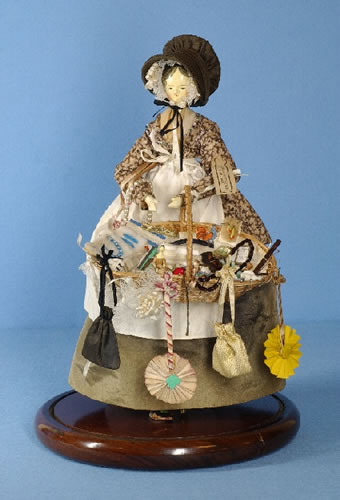
Pedlar dolls were not really meant to be played with. They were designed as ornaments and often kept under glass domes on mantelpieces or sideboards. They were modelled on real pedlars who travelled from house to house selling a wide range of wares.
In her basket, this doll has miniature combs, gloves and even tiny dolls!
Noah's Ark
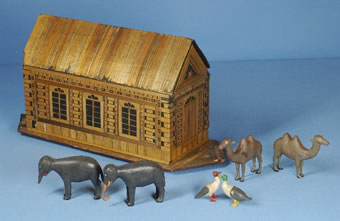
This Noah’s Ark toy was probably made in the last half of the 19th century. It has been carefully made from wood and decorated with strips of straw to look like marquetry. The Noah’s Ark was a popular Victorian toy because they were suitable to play with on Sundays.
Walking doll, 1850 - 1880
This doll is a moving toy known as a ‘walking doll’ or ‘Autoperipatetikos’.
She has a clockwork mechanism hidden under her yellow silk skirt.
When you wind the brass key in the clockwork mechanism, the metal feet move or walk.
As well as learning about play, dolls like this one help us to explore the changing technology of toy manufacture.
Miniature bureau
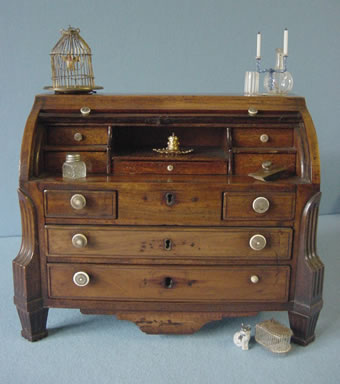
This miniature piece of doll’s furniture might not even be a toy. We think it could have been made by an apprentice to demonstrate his craft skills. We have displayed it here with a range of pieces of doll’s house furniture.
Some doll’s house miniatures could be bought from shops but others, like this tiny cardboard mousetrap, were often homemade.
Steiff Teddy Bear, 1908 (H15970)

This bear was made by one of the famous early manufacturers, a German firm called Steiff. You can see their trademark button in the bear’s left ear. Early bears like this one have a hump on their back, and pointed noses.




